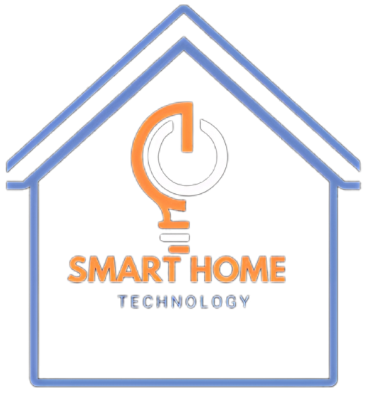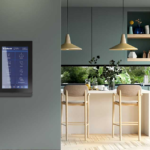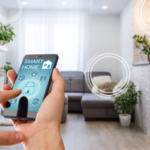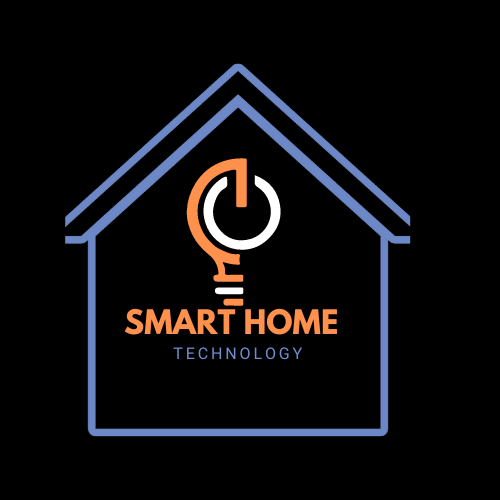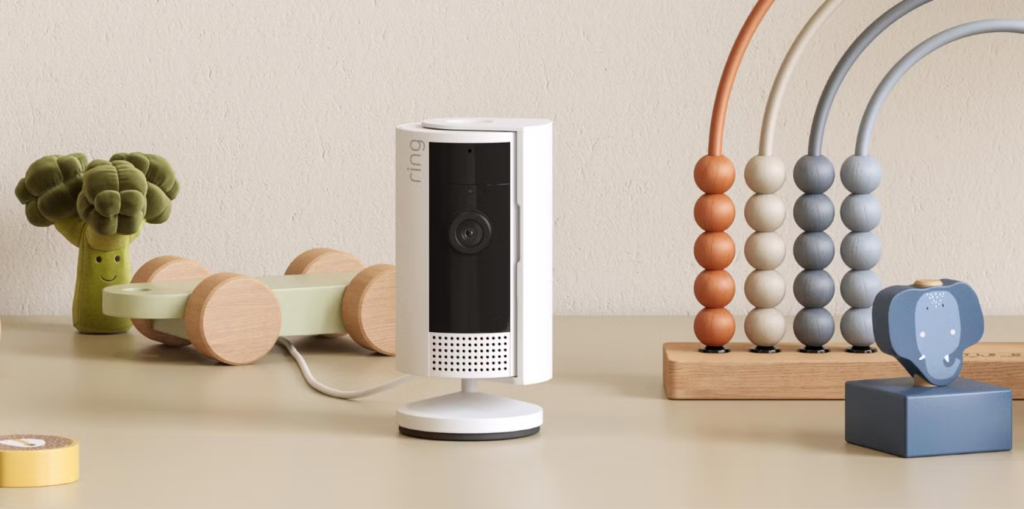
Table of Contents
Is your smart home safe? According to a 2023 Pew Research Center study, over 54% of Americans expressed their worries about how much personal data the smart devices ask for, and they also asked who has access to that information.
Smart home devices have now become a trend; they have changed how we live, giving us quality comfort, efficiency, and connectivity. From smart refrigerators, smart speakers, and security cameras, these smart gadgets have made life convenient, allowing you to control your home from anywhere you are with a voice command or through a mobile application (app).
However, as their usage grows in our day-to-day lives, questions of concern are raised about privacy. Are these smart home devices secretly watching, listening, monitoring, or collecting data about our daily lives? This article will help you understand what a smart home is, what makes up a smart home, how it works, what is smart home data protection and how you can protect your privacy with your smart device.
What is a Smart Home?
Smart homes are networked living, where various electronic devices are connected to be able to communicate via a stable internet connection. The goal of a smart home is to improve the standard of living by offering convenience, energy efficiency, security, comfort, and enjoyment by controlling the devices remotely. The smart home devices are controlled via a central hub, mobile application, or a voice assistant that allows the smart home users to control the functions and settings anywhere they are.
What are Smart Home Devices?
The smart home devices are what make a smart home. These devices, also known as the Internet of Things (IoT), interact with other devices. These devices are connected and can be accessed through the central hub.
They include smartphones, security cameras, refrigerators, thermostats, lights, game consoles, and many more home appliances, which can do tasks and automate everyday activities.
Examples of Smart Home Devices Include;
These are smart home devices that make a smart home, they offer ease of use and efficiency, but collect different personal data about you and your household:
- Smart Speakers: These are devices like Amazon Echo and Google Home that respond to voice commands or assistants.
- Smart Cameras: The security cameras stream video to your phone or cloud storage for safety so you can monitor your home remotely.
- Smart Thermostats: These are devices like Nest that learn your heating and cooling preferences.
- Smart Doorbells: They are gadgets with cameras and two-way communication.
- Smart Lights: These are bulbs that you can control via apps or voice commands.
- Smart Plugs: Outlets that can be turned on or off remotely.
- Smart Appliances: These are devices like refrigerators, ovens, and washing machines with Wi-Fi capabilities.
- Wearable Tech: The fitness trackers and smartwatches will monitor your health and activity.
- Smart Locks: Door locks that can be controlled through an app.
- Home Hubs: They are centralized systems that integrate multiple devices.
How Does Smart Home Devices Work?
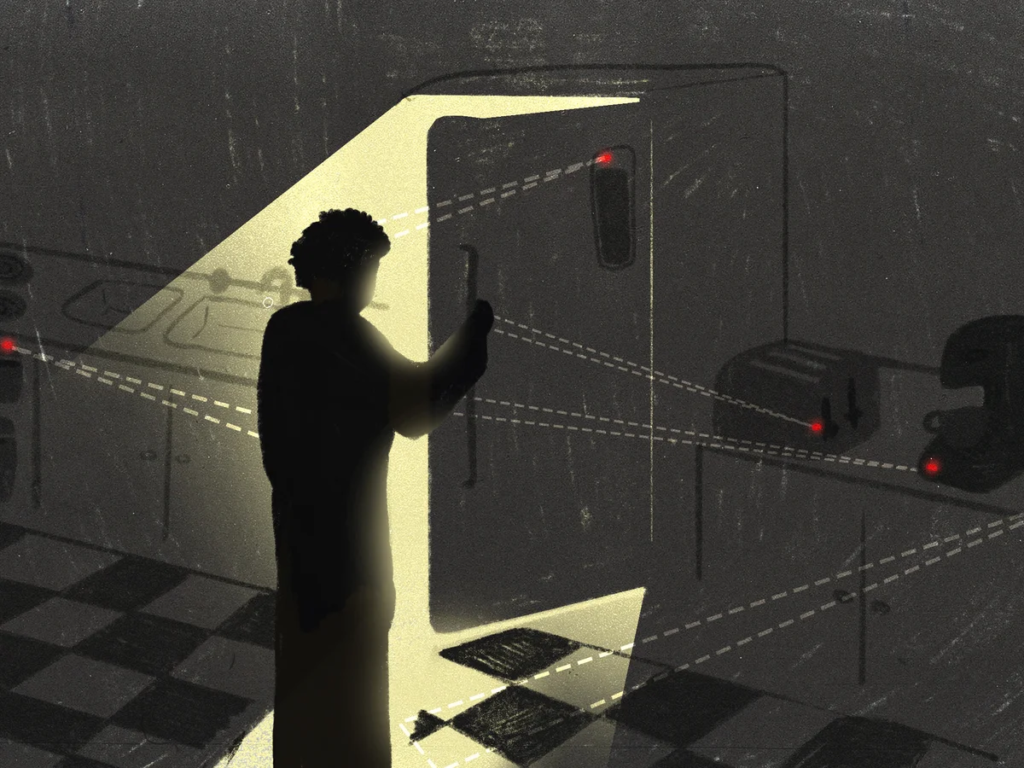
Smart home devices function through combined technologies that allow them to collect, communicate, and process data.
The devices can exhibit features like convenience, standard living, luxury, energy efficiency, and security. Here is how they work;
- Sensors: The devices use sensors to detect changes in their environment, such as motion, temperature, or light levels.
- Internet Connection: They rely on Wi-Fi or other network connections to send and receive data.
- Data Collection: These devices gather information such as voice commands, video feeds, or usage patterns.
- Cloud Storage: The data is often sent to cloud servers for processing and storage.
- Apps: Users control devices via smartphone apps or web interfaces.
- Voice Assistants: Many devices integrate with Alexa, Google Assistant, or Siri for hands-free control.
- Automation: The devices use algorithms to perform tasks automatically, like adjusting the thermostat based on your habits.
- Updates: There are regular firmware updates to ensure devices stay functional and secure.
- Integration: The devices are connected with other smart gadgets to create a seamless ecosystem.
- User Feedback: Some devices learn from your preferences to improve functionality.
What is Smart Home Data Protection?
Smart home data protection is referred to as the tools, practices, and technology used to secure the data generated by smart home devices from breaches, unauthorized access, or misuse.
The increase of circulated personal data due to the networking of devices via Wi-Fi, Bluetooth, or mobile phone networks must be viewed critically. These networks are not always adequately secured. Even without a hacking attack, numerous possibilities exist for third parties, such as manufacturers or technicians, to gain insight into sensitive data areas.
In the United States, privacy laws are different for every state, but there is no singular federal regulation governing smart home data protection. However, consumers can follow general data privacy practices to mitigate risks. These include:
- Consent: Ensuring data is collected only with explicit user consent.
- Purpose Limitation: Ensuring that data collection serves a specific, transparent purpose.
- Data Minimization: Limiting data collection to only what is necessary.
While there are efforts to establish comprehensive privacy laws, such as the California Consumer Privacy Act ( CCPA), specific standards for smart home applications remain limited. Consumers must proactively manage their privacy by selecting devices carefully, configuring settings, and conducting regular checks to maintain a secure connected home.
Features of Smart Home Data Protection.
As the demands of smart home devices continue to grow, the need to secure the sensitive data they create becomes more concerning. Below are the key features of smart home data protection, each holding the importance of ensuring privacy and safety in your smart home and environment;
- Data Encryption: Encrypting data both in transit (as it moves between devices and servers) and at rest (stored data) ensures that even if intercepted, the information cannot be easily accessed or understood.
- Secure Network: Using secure Wi-Fi networks with strong passwords and WPA3 encryption prevents unauthorized access to smart home devices.
- Device Authentication: Implementing strong, unique passwords and multi-factor authentication for each smart home device reduces the risk of hacking.
- Regular Updates and Patching: Keeping device firmware and apps up-to-date addresses vulnerabilities and ensures that devices have the latest security features.
- Data Minimization: Smart home systems should collect only the data necessary for their functionality to reduce the risk of excessive or sensitive information being compromised.
- Access Controls: Setting up user permissions and restricting access to certain features or data ensures that only authorized individuals can control devices or view sensitive information.
- Privacy Settings: Reviewing and adjusting privacy settings on smart home devices can limit data sharing with third parties.
- Monitoring and Alerts: Systems that provide alerts for suspicious activity or unauthorized access attempts help users take quick action to secure their data.
- Third-party Integrations: Ensuring that third-party apps or services integrated with smart home devices adhere to strong security and privacy standards minimizes the risk of data leaks.
- Data Backup and Recovery: Periodically backing up essential smart home data and having a recovery plan can mitigate the impact of a breach or system failure.
What Are The Data Processing Possibilities with Smart Home?
In the smart home, there are different types of data collected, processed, and used to improve the functions of these smart devices. It is also important to know how your data is handled in the smart home depending on various features such as; your settings or the manufacturer’s privacy policy.
Here are some of the things that can happen with your data in the smart home:
- Data processing: The device or cloud servers process the collected data. This can include pattern analysis, deviation detection, statistical compilation, and prediction.
- Personalization: Smart home devices can generate personalized settings and activities based on the data they collect. For example, your smart thermostat might automatically adjust the temperature based on your preferences.
- Remote monitoring: If fraudsters gain access to cameras or microphones in smart home devices, they may be able to monitor your life without your knowledge. This constitutes a severe breach of privacy.
- Data transfer to third parties: Some smart home manufacturers may share your personal information with other parties to deliver services or conduct marketing activities. This could lead to you receiving unsolicited advertising or your data being used in ways you cannot control.
- Inadequate encryption: This happens between smart home devices, apps, and the cloud can compromise data confidentiality and integrity. Additionally, automatic data collection from smart home devices can create a sense of surveillance and privacy concerns.
- Automatic data collection: Many smart home devices continuously capture data about your behavior and usage, which may make you feel tracked or watched, compromising your privacy.
What Are The Privacy Concerns With Smart Home?

Smart home devices are not without risks. Here are the main privacy concerns that you need to know;
- Constant Data Collection: These devices often collect data continuously, even when not in active use.
- Always-On Microphones and Cameras: Smart speakers and cameras may listen or watch even when you’re not aware.
- Data Sharing: Most companies may share your data with third parties, including advertisers.
- Weak Security: Many devices lack strong encryption or other protections, making them vulnerable to hacking.
- Lack of Transparency: Privacy policies are often blank, making it hard to know how your data is being used.
- Unauthorized Access: Hackers can gain control of devices, compromising your security.
- Data Breaches: Stored data may be exposed in cyberattacks.
- Behavior Tracking: Companies can use your data to monitor habits and predict behaviors.
- Location Tracking: Some devices collect location data without explicit permission.
- Legal Surveillance: Law enforcement may access data without your consent.
Examples of Privacy Breaches Include;
To understand the risk, let’s look at real incidents involving smart home devices. These cases underline the importance of protecting your devices and making you aware of privacy policies:
- Baby Monitor Hacks: This is when Hackers access baby monitors, speaking through them to families.
- Smart Camera Invasions: Cybercriminals gained access to security cameras, streaming footage online.
- Ring Doorbell Breach: Hackers compromised user accounts, exposing video footage.
- Amazon Alexa Recordings: Alexa recorded private conversations and sent them to random contacts.
- Google Nest Thermostat Exploits: Hackers remotely adjusted home temperatures.
- Smart TV Spying: Certain smart TVs collected viewing data without user consent.
- Samsung’s Warning: Samsung warned users that their smart TVs might listen to conversations.
- Fitness Tracker Data Leaks: Personal health data from wearables was exposed.
- Unauthorized Data Storage: Companies stored more data than disclosed in privacy policies.
- Lawsuits: Some companies faced lawsuits for mishandling user data.
How To Protect Your Privacy With Smart Home Devices.
It is very important you know the right steps to safeguard your privacy while enjoying the advantages of smart home devices. Here’s how to safeguard your privacy:
Photo Credit: Rapid Fix Pro Alliances
- Use Strong Passwords: Make sure you create unique passwords that only you can know for each device and account. Try creating passcodes that are far from your number identity, like your birthday, and if you still want to create something related to it, add a special character or number. This is the very first important step.
- Enable Two-Factor Authentication: Always add an extra layer of security.
- Update Firmware Regularly: Make sure to always keep your devices updated to fix vulnerabilities.
- Disable Unused Features: Always turn off microphones or cameras when not needed.
- Review Privacy Settings: Adjust settings to minimize data collection.
- Secure Your Wi-Fi Network: Use a strong Wi-Fi password and consider a guest network for devices.
- Monitor Account Activity: Always check for unauthorized logins or actions.
- Read Privacy Policies: Understand how your data is used and stored.
- Avoid Public Networks: Don’t control devices over unsecured networks.
- Invest in Encrypted Devices: You can choose gadgets with robust security features.
How To Balance Convenience With Privacy.
Convenience, security, energy efficiency, and comfort are all part of the offers a smart home gives to us. Here are tips on how to right balance convenience with privacy;
- Prioritize Security: Always choose devices with strong security credentials.
- Educate Yourself: Make sure you stay informed about potential risks; this will help you avoid any future issues.
- Limit Data Sharing: Always opt out of unnecessary data-sharing agreements.
- Customize Features: Only use enabled features actively.
- Use Privacy-Focused Brands: You can select companies known for respecting user privacy.
- Regularly Audit Devices: Always check connected devices and remove unused ones.
- Install Firewalls: Protect your home network with additional security layers.
- Avoid Over-Reliance: Don’t connect every household item to the internet.
- Use Physical Covers: Block cameras and microphones when not in use.
- Stay Updated: Keep up with news about privacy trends and risks.
FAQs
Do smart home devices spy on you?
Some smart home devices can collect and share data about your usage patterns, voice commands, and connected activities. While not inherently designed to “spy,” some devices may inadvertently or intentionally compromise privacy through data collection, security vulnerabilities, or improper usage policies.
What are the privacy concerns of smart home devices?
- Data Collection: Devices often gather data such as voice recordings, location, or usage habits.
- Data Sharing: Some companies share user data with third parties, including advertisers.
- Hacking Risks: Poor security features can allow hackers to access your network and devices.
- Always-On Microphones/Cameras: Devices with these features may unintentionally record private conversations or activities.
- Weak Policies: Lack of transparency in privacy policies may leave users unaware of how their data is being used.
What is the biggest danger of the smart home?
The biggest danger of a smart home is cybersecurity vulnerabilities. If devices are not properly secured, hackers can gain access to your personal data, and security cameras, or even control connected devices, compromising your safety and privacy.
How do I stop my smart home from spying on me?
- Secure Your Network: Use strong, unique passwords and enable encryption (e.g., WPA3) on your Wi-Fi network.
- Review Permissions: Disable unnecessary features like always-on microphones or location tracking.
- Update Regularly: Keep device firmware and apps up to date to protect against vulnerabilities.
- Disable Unused Features: Turn off devices or features when not in use, such as voice assistants.
- Read Privacy Policies: Understand how your data is collected and used before purchasing or setting up devices.
Are smart home devices always listening?
Some smart home devices, like voice assistants (e.g., Alexa, and Google Assistant), are always listening for wake words to activate their features. While these devices claim not to record or send data until triggered, occasional false activations or hacking risks can lead to unintended recordings.
Can someone see you through your smart TV?
Yes, if your smart TV has a built-in camera, it could potentially be accessed by hackers through malware or vulnerabilities. To prevent this:
- Cover the camera when not in use.
- Disable the camera in settings or unplug the TV from the network.
- Keep firmware updated to reduce security risks.
- Avoid suspicious links or apps that might install malware on your TV.
Conclusion
Smart home devices give unlimited convenience, from security to energy efficiency and many more that you can find in this article, but they also come with significant privacy concerns. Always take an active step in securing your smart devices, minimizing data collection, and balancing the benefits of your privacy.
You must protect your personal information, but that doesn’t mean giving up technology. If you want to feel safe in your smart home, start by reviewing your devices and implementing the tips in these articles to enjoy a convenient, safer home.
